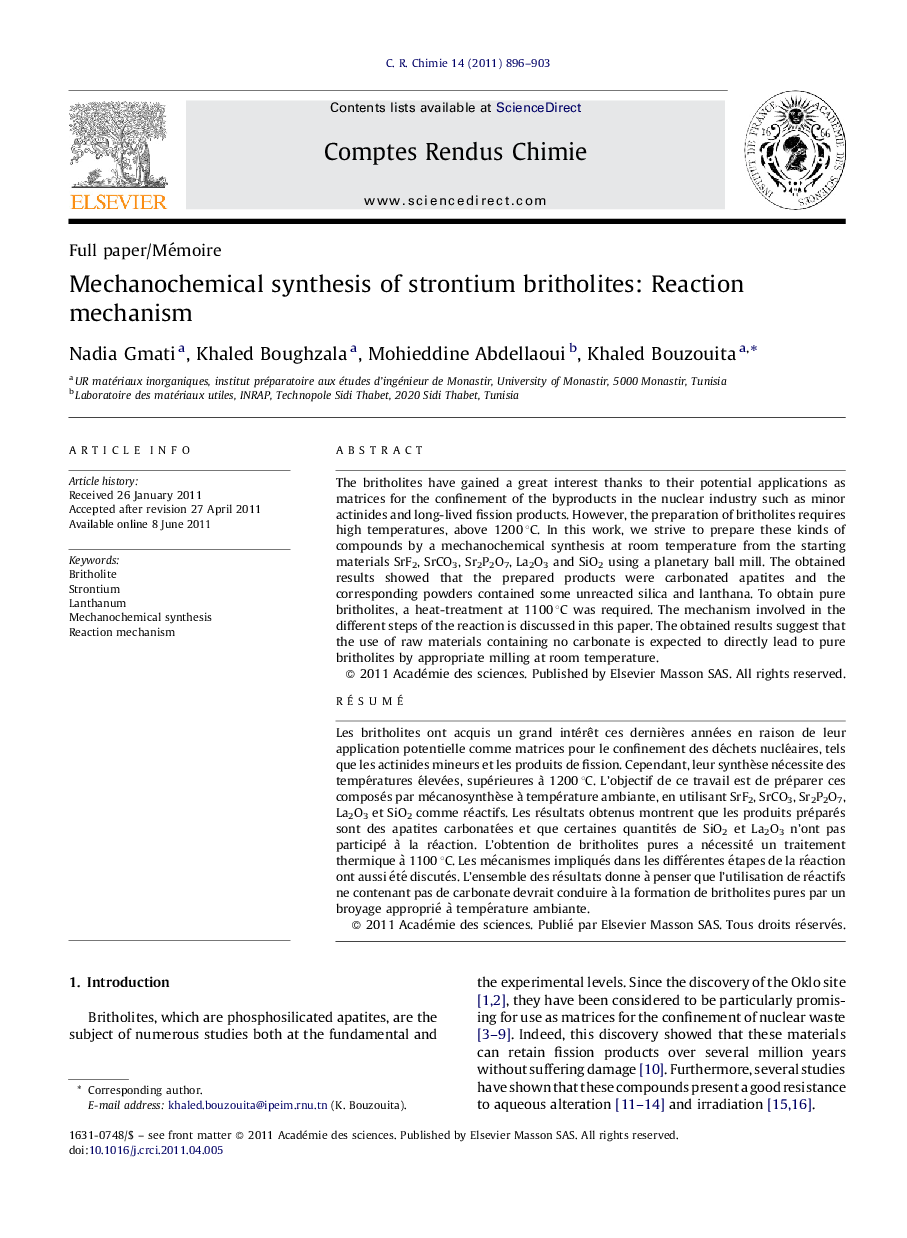| کد مقاله | کد نشریه | سال انتشار | مقاله انگلیسی | نسخه تمام متن |
|---|---|---|---|---|
| 171236 | 458441 | 2011 | 8 صفحه PDF | دانلود رایگان |

The britholites have gained a great interest thanks to their potential applications as matrices for the confinement of the byproducts in the nuclear industry such as minor actinides and long-lived fission products. However, the preparation of britholites requires high temperatures, above 1200 °C. In this work, we strive to prepare these kinds of compounds by a mechanochemical synthesis at room temperature from the starting materials SrF2, SrCO3, Sr2P2O7, La2O3 and SiO2 using a planetary ball mill. The obtained results showed that the prepared products were carbonated apatites and the corresponding powders contained some unreacted silica and lanthana. To obtain pure britholites, a heat-treatment at 1100 °C was required. The mechanism involved in the different steps of the reaction is discussed in this paper. The obtained results suggest that the use of raw materials containing no carbonate is expected to directly lead to pure britholites by appropriate milling at room temperature.
RésuméLes britholites ont acquis un grand intérêt ces dernières années en raison de leur application potentielle comme matrices pour le confinement des déchets nucléaires, tels que les actinides mineurs et les produits de fission. Cependant, leur synthèse nécessite des températures élevées, supérieures à 1200 °C. L’objectif de ce travail est de préparer ces composés par mécanosynthèse à température ambiante, en utilisant SrF2, SrCO3, Sr2P2O7, La2O3 et SiO2 comme réactifs. Les résultats obtenus montrent que les produits préparés sont des apatites carbonatées et que certaines quantités de SiO2 et La2O3 n’ont pas participé à la réaction. L’obtention de britholites pures a nécessité un traitement thermique à 1100 °C. Les mécanismes impliqués dans les différentes étapes de la réaction ont aussi été discutés. L’ensemble des résultats donne à penser que l’utilisation de réactifs ne contenant pas de carbonate devrait conduire à la formation de britholites pures par un broyage approprié à température ambiante.
Journal: Comptes Rendus Chimie - Volume 14, Issue 10, October 2011, Pages 896–903